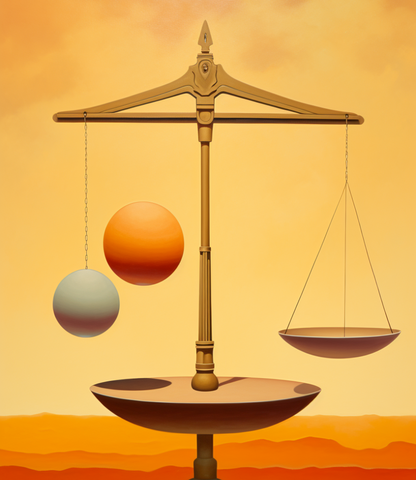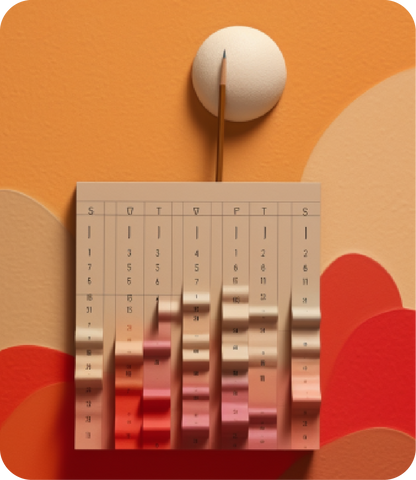
How does period syncing work?
“Period syncing” is one of those concepts that I don’t remember ever specifically learning about, but is a core part of my narrative about my cycle. It falls into a category of social knowledge I’ve collected about periods over my years of experiencing them. I associate it with passing tampons under the bathroom stall, or living with a best friend or girlfriend as a roommate and casually commenting on our simultaneous cycles. It’s not something we ever discussed in health class or a question brought up in the gyno’s office–it’s always just existed as a marker of closeness, something I’ve thought of as a social signifier rather than a medical fact. But it does bring up the question: Is period syncing real, or is it just a superstition? If it’s a biological phenomenon, how does period syncing work? If it’s a myth to be debunked, why do so many of us see it happen in our everyday lives?
Related to: How Your Menstrual Cycle Affects Your Sleep and What You Can Do About It
The Science of Period Syncing
It’s widely acknowledged in the medical community that women’s health issues in general have historically been understudied and continue to have a dearth of research to this day. Reproductive health and rigorous studies involving menstruating people are no exception–these fields exemplify this deeply embedded bias in medical research.
However, there is science related to period syncing, dating back over 50 years ago. As society began to be more open to conversations about sex and reproductive health, along with women’s rights, with the backdrop of the American culture (and counterculture) of the 1960s and 70s, a young and ambitious psychologist, Martha McClintock, decided to take up the question of period syncing from a scientific perspective.
A recent graduate of Wellesley College, McClintock decided to return to her alma mater to study the relationship between social interaction and period synchrony. Wellesley, being a women’s college with plenty of young women living together in dorms, provided McClintock with a solid population to research. The conclusions reached in her landmark 1971 study found that there was a high incidence of period synchrony and that it was likely due to pheromone signals shared by the women’s proximity. Period syncing became known as the “McClintock effect,” and the researcher continued on this line of inquiry for the following decade, attempting to explore her theories on pheromones with more depth. However, as other researchers became interested in the field, holes began appearing in the logic and methodology of this study.
Related: The Divine Allure of DamianaPeriod Synchrony Debunked
In the years that followed, other scientists found they could not reproduce the results of McClintock’s original study. Beverly Strassman, an anthropologist whose research focuses on the relationship between biological functions and social practices with a special interest in menstruation, has published many studies that directly contradict claims made about the McClintock effect. She, along with many other scientists over the years, has written extensively on the statistical errors and lack of reproducibility of period synchrony. Studying the cycles of women across cultures, outside of an American context, Strassman could not find evidence of syncing up. More recent studies on menstruators from around the world reflect these findings.
Period Syncing Myths
Despite famous studies supporting both sides of the period syncing debate, evidence points toward the conclusion that there is more fiction than fact to this widely-held belief. What are the main myths associated with how we sync our periods?
Syncing Up Pheromones
One of the most popular ideas that have been floating around in the air since McClintock’s original study is that our ambient pheromones are the cause of shifting our cycles to be in sync. The idea is that women who spend a lot of time together, particularly women who live together, will have enough social contact and physical proximity to pick up each others’ cycle-related pheromones.
Although these studies present various theories about pheromones, there is little biological research in humans related to cycle pheromones and synchrony. Some research that has been done on small groups in recent years suggests that there is no relationship between menstrual cycle pheromone secretion and detection and syncing up periods–but that other factors may contribute to this controversial phenomenon (we’ll look further into this below).
Following the Phases of the Moon
Periods have long been associated with the moon–with the average menstrual cycle matching the 28-day lunar cycle, a cycle that is invaluable across cultures throughout history for its reliable time-keeping with animal migrations, seasonal changes, and harvest schedules. Even the word “menstruation” has direct etymological ties to the lunar month. It comes from the Latin word for month, “mensis,” and the Greek word for moon, “mene.” You can even see how, in English, these three terms are still spelled and pronounced in similar ways: menstruate, month, and moon.
The significance of the cycle length amongst different species and populations still needs further study, but one retrospective study found that there is no significant correlation between lunar cycles and period syncing. However, we want to highlight that this doesn’t mean we can’t personally feel a deep connection to the moon through our cycles! Our relationship with our bodies and our mind-body connection is different for everyone.
Related to: Black Cohosh Root
Why Periods Sync
If science isn’t science-ing when it comes to the pheromone theory of period synchronization, then what might explain the fact that so many of us see it happen to ourselves or the people around us?
Similar Lifestyles
There are some studies that point toward the existence of period synchrony, but not for the typical pheromone / olfactory relationship that more famous studies put forward. One study found that key factors in synchrony include “mutual activities, friendship, and menstrual regularity.” If people spend a lot of time together, they’re likely eating similar foods, experiencing similar environments, and even exercising together. T doing what close friends and partners do together. It follows that certain biological functions that are tied to lifestyle choices and environmental factors, like the menstrual cycle, will respond in kind. This needs more study, but it could explain the incidences of studies suggesting the existence of period syncing.
Different Cycle Lengths
This one is just some simple math. If people tend to have variable menstrual cycle lengths, then they’re bound to sync up once in a while. A person who tends toward a 5-week cycle living with a person who has a cycle that is often closer to 3 weeks will sync up every few months.
Confirmation Bias
Welcome to Psych Class 101: confirmation bias. We are all subject to this all-too-common factor that influences our perception of facts and real-world events. A basic definition of confirmation bias is “people’s tendency to process information by looking for, or interpreting, information that is consistent with their existing beliefs.” Let’s say someone has 10 close friends, coworkers, or people they live with who menstruate. If someone already believes in period syncing, then every time their period syncs up with one or two people in this extensive group, a little lightbulb will go off with the idea: our periods are synced up!
Syncing up in the future
It’s generally accepted that the pheromone theory of period syncing among menstruators who live n doesn’t hold much water in the medical field. Even if period syncing is a medical myth, that doesn’t minimize its importance in tying together close menstruators who are sharing personal health information as a social practice. The more we speak out in the open about our periods, the more society at large will take it seriously and put more money and resources into essential studies and public health resources for menstruators.
Sources
Critchley HOD, Babayev E, Bulun SE, Clark S, Garcia-Grau I, Gregersen PK, Kilcoyne A, Kim JJ, Lavender M, Marsh EE, Matteson KA, Maybin JA, Metz CN, Moreno I, Silk K, Sommer M, Simon C, Tariyal R, Taylor HS, Wagner GP, Griffith LG. Menstruation: science and society. Am J Obstet Gynecol. 2020 Nov;223(5):624-664. doi: 10.1016/j.ajog.2020.06.004. Epub 2020 Jul 21. PMID: 32707266; PMCID: PMC7661839.
H.Clyde Wilson, A critical review of menstrual synchrony research, Psychoneuroendocrinology, Volume 17, Issue 6, 1992, Pages 565-591, ISSN 0306-4530, https://doi.org/10.1016/0306-4530(92)90016-Z.
Yang Z, Schank JC. Women do not synchronize their menstrual cycles. Hum Nat. 2006 Dec;17(4):433-47. doi: 10.1007/s12110-006-1005-z. PMID: 26181612.https://srh.bmj.com/content/33/2/116
Ilias I, Spanoudi F, Koukkou E, Adamopoulos DA, Nikopoulou SC. Do lunar phases influence menstruation? A year-long retrospective study. Endocr Regul. 2013 Jul;47(3):121-2. doi: 10.4149/endo_2013_03_121. PMID: 23889481.














































